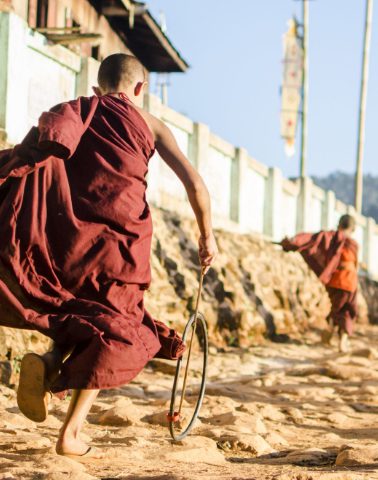
Subscribe to our mailing list
We are still here! Let us send you tips for travelling through Myanmar and stories from the road …
Situated on the banks of the Ayeyarwaddy River, the Bagan Archeological Zone is spread over 25 square-kilometres of peanut fields in shades of orange and gold. Peppered over this landscape are the thousands of pagodas that the rulers and the rich of the Bagan Empire built in a wave of religious fervour between the 9th and the 13th Centuries.
Losing yourself amongst these temples is one of the most pleasant things to do in Myanmar. As Professor Tun Aung Schain writes:
‘Time has been a relentless enemy, but linger a while among these monuments … linger, and dimly at first, then with increasing clarity comes a realisation of the glory that-was Bagan …’
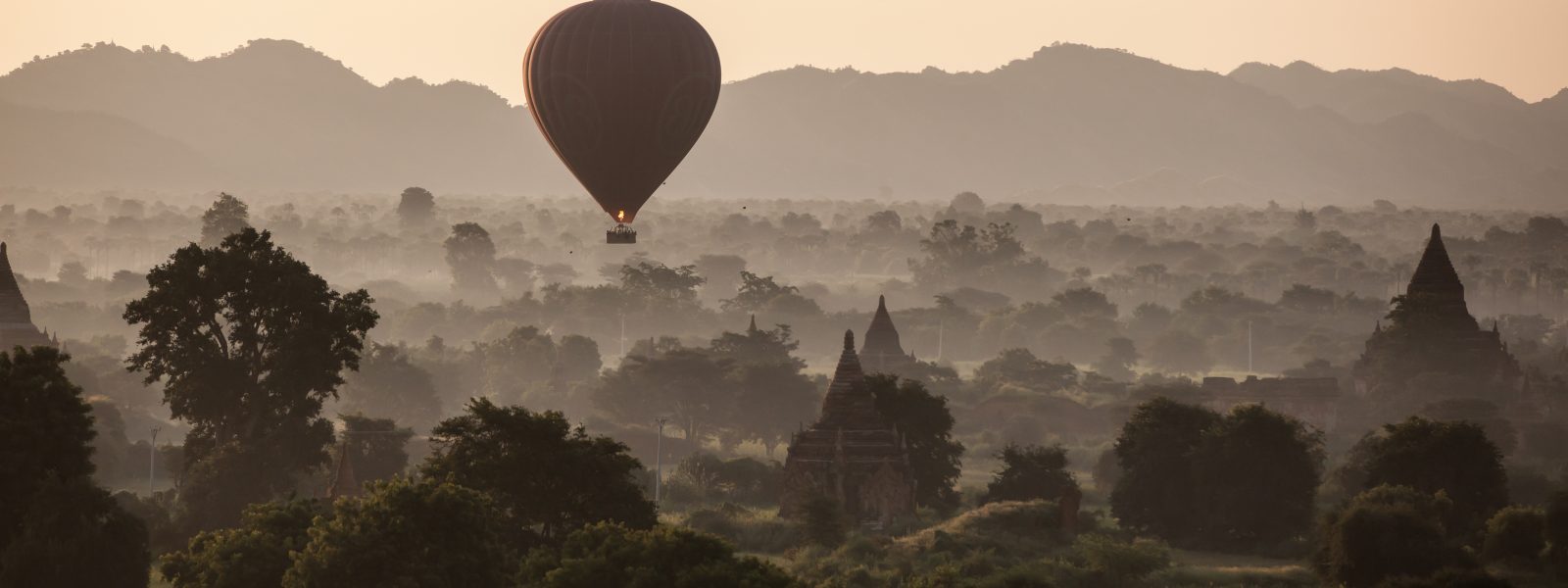
The heart of Bagan, where the largest and most celebrated temples are, is known as “Old Bagan”.
Ananda Temple, ornate and appearing as though it has received a heavy dousing of talcum powder, is one of the most popular temples to visit in Bagan due to its splendour, size and good state of preservation.
Perfectly proportioned, the Ananda Temple marks the stylistic demise of the early Bagan Period and the beginning of the Middle Period. Inside the temple visitors can view the different styles of Buddha image, the Indian or ‘Bagan’ style and the later Burmese style.
The mammoth Dhammayangyi Pahto with its bloody history of patricide and Indian assassins, as well as Shwegugyi, are best visited with a guide so you are able to hear their gruesome legends.
Visitors to Bagan should also explore Htilominlo, one of Bagan’s largest temples, Shwesandaw, potentially Bagan’s oldest, and Sulamani, Ananda’s rival in architectural beauty.
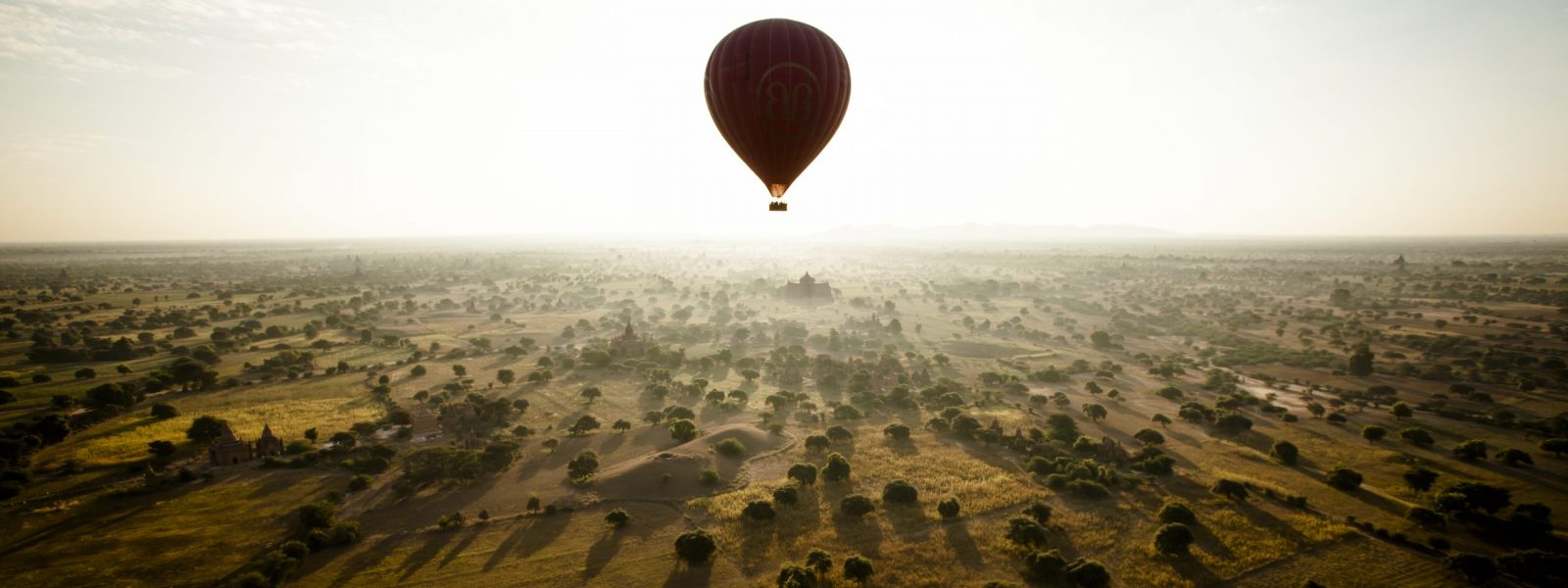
There are a handful of grand hotels situated in “Old Bagan” but the majority of those visiting Bagan base themselves in one of the small towns and villages on the outskirts of the Archeological Zone. Each of these are worth visiting, no matter where you are staying.
Nyaung U is the most active town in the Bagan region. It is where most of Bagan’s restaurants are situated as well as the airport, train station, and central bus station. Shwezigon, at the centre of Nyaung U, is one of the most important pagodas in Myanmar and one of the most common places to visit in Bagan. Although it sparkles with regularly-applied gold-leaf, it is one of the oldest pagodas in Bagan, built by King Anawrahta in 1059.
In Nyaung U it is also able to see the colonial heritage of the region (a chapter of history often forgotten in Bagan) as well as the sites of the river crossing made by General Bill Slim’s “Forgotten Army” as they raced the Japanese Imperial Army to Rangoon during the Second World War.
Just west of Nyaung U towards Old Bagan is the village Wetkyi-in, which means ‘Giant Pig.’ This name comes from the local legend of a pig that once dwelled in the village lake and was responsible for gobbling up many a local before a young prince smote it.
Adventurous visitors may want to sniff out one of the inconspicuous toddy shops that lie just outside of Wetkyi-in. Venture down one of the sandy paths that snake off from the main road and you may be lucky and find what you are searching for … A hut or two where you will be settled down in front of a crackling television set and served a frothy glass of toddy, perhaps in the company of an indifferent grandfather and children back from school, still in their starched uniforms.
Situated on the other side of Old Bagan is New Bagan. New Bagan came into existence in the mid-1990s when the government relocated villagers out of the Archeological Zone to a stretch of peanut fields 4 kilometres south. There is a vibrant morning market, a smattering of ruins, and plenty of jolly beer stations. It is also a thriving hub of Burmese lacquerware production, popular with visitors to Bagan.
Just beyond New Bagan is Thiripyitsaya which was once the main port of Bagan with ships from India and Sri Lanka sailing in and out each day. There is more activity here than in New Bagan; even the dogs appearing more energetic than their groggy brethren further north. Nattering hens flutter across your path and men recline outside their houses in shallow bamboo deck-chairs, gently bouncing babies on their bellies.
Boys work and play in the shallows of the Ayeyarwaddy and when it is cooler travellers in Bagan can watch the local lads embark on a game of chinlone cane football. Thiripyitsaya also boasts the sparkling Buu Pagoda which from a boat on the Ayeyarwaddy looks like a giant golden egg perching upon the lip of the cliff.
Unlike much of Myanmar, Bagan, known as ‘the parched land’ to the Mon people, is subject to little of the deluge that rains upon Yangon between June and September.
Visitors to Bagan in the wet season will be able to enjoy the area free of flocks of tourists and enjoy the view of the temples upon a fleeting green landscape appearing like rubies on velvet. However, the chance for the odd rain shower remains, and the sunset and sunrise views are likely to be draped in patches of cloud. Though this can be spectacular in itself, it may disappoint some visitors hoping for postcard-perfect photos.
Those visiting Bagan between October and February can enjoy the fading greenery and cool temperatures, while travellers in Bagan between March and May should prepare for temperatures of up to and beyond 40 degrees celsius.
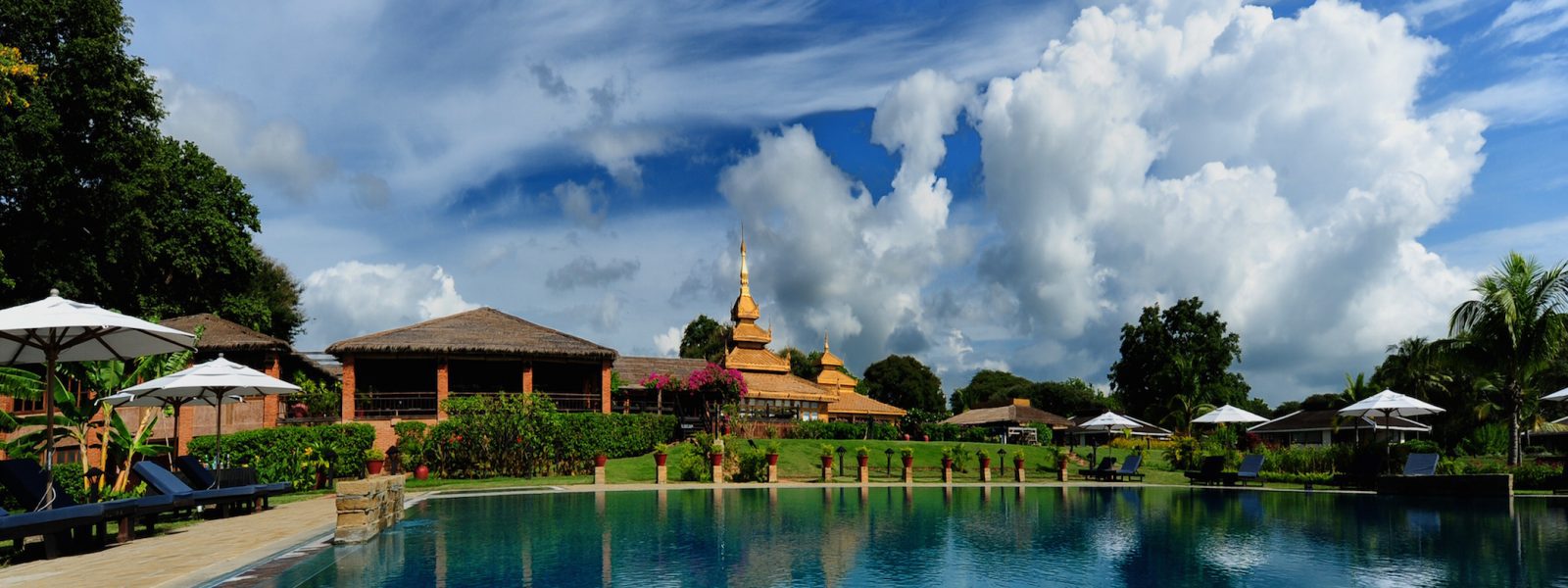
Mainstream scholarship claims that Bagan was founded by the Bamar people entering the Irrawaddy Delta east from modern day China in the 9th Century.
The Burmese Chronicles elaborate on the genesis of Bagan, claiming that it was a soldier named Pyusawthi who founded the city after vanquishing a great boar, a great bird, a great tiger and a flying squirrel, all of which had been terrorizing the local population.
A couple of centuries later, an enterprising youth named Anawrahta (“his mother’s milk still wet upon his lips”) seized the throne and united the people of the delta under his own banner, turning the city-state of Bagan into an empire.
By the end of the 11th Century, Bagan was the cultural, spiritual and economic hub of Southeast Asia, rivalled only by the Khmer Empire in modern-day Cambodia. Beyond commerce (which it dealt greatly in) Bagan was primarily a centre for scholarship and religious worship. Bagan drew monks, students and scholars from as far as India and Ceylon.
The Bagan Empire is heralded as having solidified the Theravada strain of Buddhism in Myanmar. King Anawrahta incorporated nat worship (the animist belief in spirit beings that is widespread throughout the country) into Buddhist theology at an inferior level, so to allow the animists to embrace Buddhism without having to abandon their former beliefs.
Mahayana and Tantric Buddhism continued to be practiced simultaneously, as well as strains of Saivite and Vaishana Hinduism.
Due to an onslaught of Mongol attacks upon Bagan, Myanmar’s first empire eventually collapsed in 1287. Though it is believed that Bagan itself was not breached, many of the monuments and buildings were torn down to reinforce the city’s fortifications.
The city, once home to perhaps as many as 200, 000 people, was reduced to a small town and the country fell into turmoil as factions rushed to take advantage of the sudden power vacuum. The temples of Bagan were largely forgotten, save for by pillagers and pilgrims.
The site was not known broadly across the globe until stumbling upon Bagan, Burma’s colonial rulers the British were struck by its majesty and sent gushing reports back to Europe.
In 1990, in preparation for Myanmar’s ‘Year of Tourism’ in 1996, the military junta forcibly relocated the villagers of Old Bagan, citing increased incidents of treasure hunting as the reason. The villagers built up New Bagan on a stretch of peanut fields while the government went on to build their own hotels where the village once stood.
In his book Under the Dragon, Rory Maclean recounts the experience of one lady returning to Old Bagan after years spent in Yangon, to find that her childhood home had vanished:
‘She stopped and listened. No cockerels crowed, no children laughed, no farmers called from the fields. She did not hear the monks as they went on their morning rounds with alms bowls and blessings. … A scorpion scuttled in the dust. The garden fence which had once surrounded the tree was gone. She could not see her bamboo gate. There was no family home, no village hall, no neighbours’ house. She stood at the edge of a dark, barren field, once the site of old Pagan village, alone.’
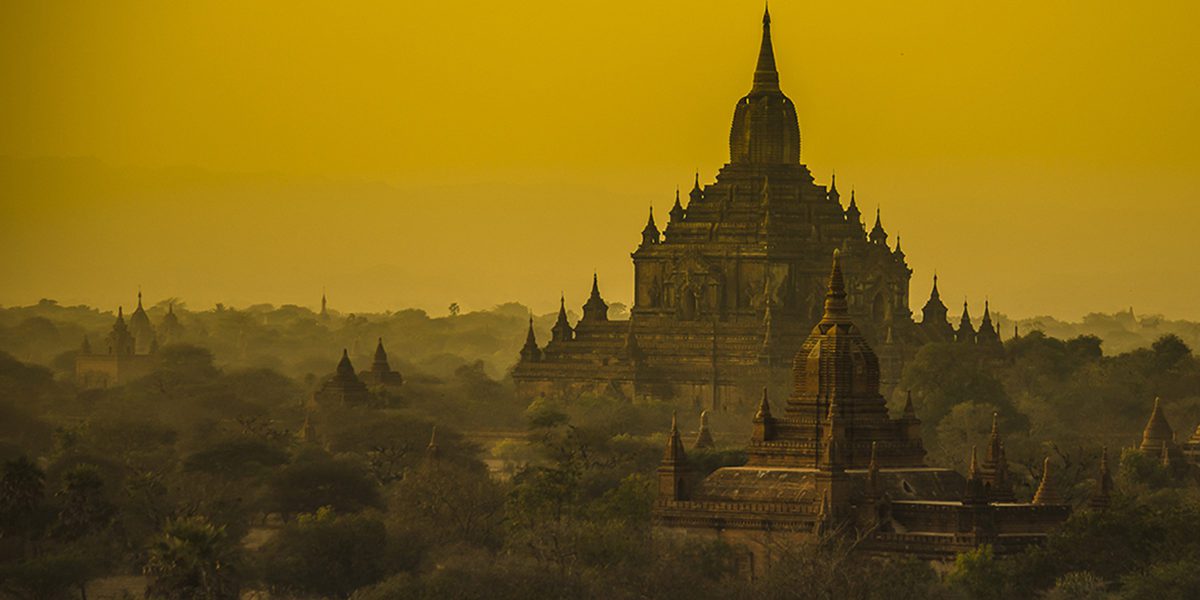
The Bagan temples and pagodas are in varying states of preservation.
For years, shoddy renovation on the part of the government and wealthy donors prevented Bagan being listed as a World Heritage Site by UNESCO. The U.N. body encourages professional restoration and preservation, but frowns severely upon whole-scale renovation, and certainly at the hotels and museum that were built within the Archaeological Zone by the military government and their cronies.
Without being a World Heritage Site, the Bagan temples and pagodas were unable to benefit from the technology and expertise that UNESCO offers in preservation. When Aung San Suu Kyi’s National League for Democracy party came into power in 2015, a concerted effort toward responsible restoration commenced. This resulted in Bagan finally being listed by UNESCO in 2019.
The Archeological Museum and the Aureum Palace Viewing Tower, both built in a mock-Bagan style, are gaudy and ill-conceived. However, most of the time visitors will be blissfully unaware of their presence.
In fact, despite its increasing fame and popularity, there will be many times during your trip to Bagan when you will find yourself amongst a landscape of dusty sand tracks and jungle creeper, where modest wooden huts are the only signs of human life whatsoever.
From many vantage points, looking out over the plain displays no sign of modernity or technological development, save for, perhaps, a stationary tinpot motorbike hitched up against a tree, with its driver next to it smoking quietly in the shade.
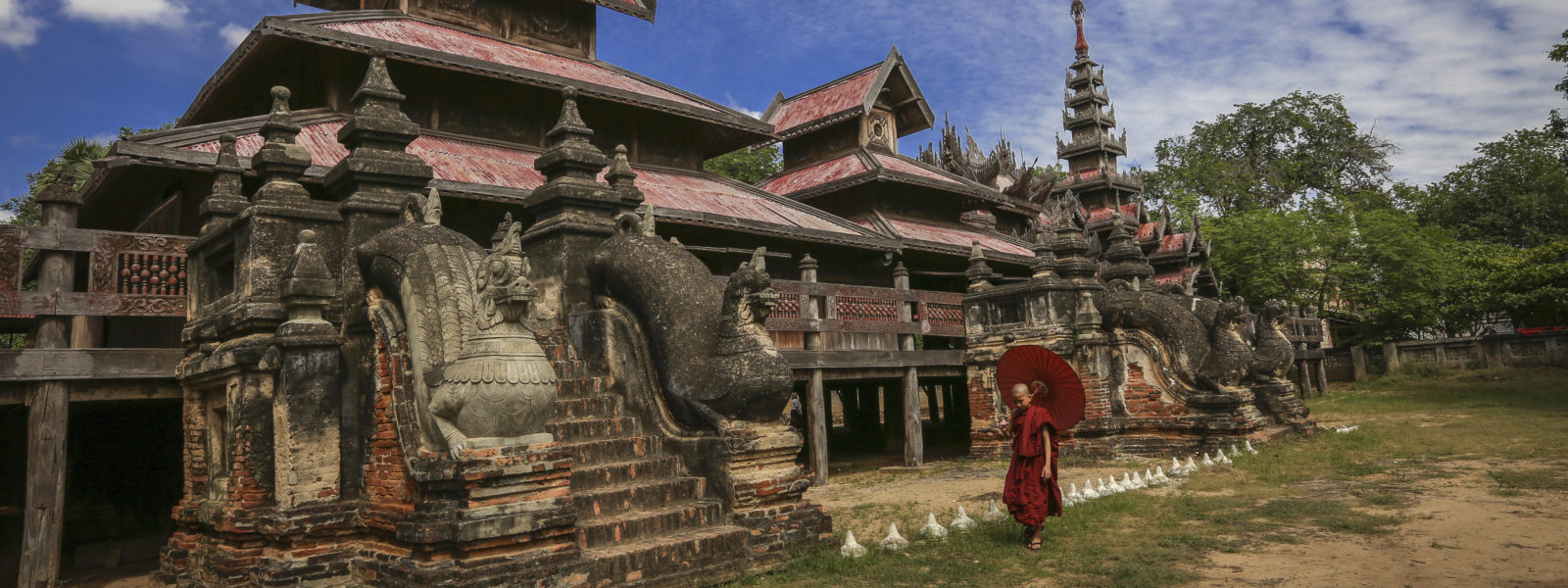
The tranquil town of Salay is home to the Youk-Soun Kyaung monastery which has been used as a museum for Buddhist art since the 1950s.
At Youk-Soun there are some remarkable wood carvings decorating the outside veranda of a variety of Buddhist and local folklore scenes. You can also see ornamental collections from the Bagan and the Konbaung Dynasties, Myanmar’s first and final empires.
Salay is the birthplace of one of Myanmar’s greatest poets, U Ponnya, and the Youk-Soun Kyaung now has a little museum dedicated to the writer’s life and work. Just a little way north is the Man Paya. Within this paya is a 6-metre golden Buddha figure made of straw lacquer. At the back there is a door where one can enter the hollow image.
Salay is also known in Myanmar for being the source of zi-thi, a local plum. These plums are said to be the most delicious in all of Myanmar and are shipped prodigiously throughout the country. Likely enough you will be granted the chance to try the local fruit outside Youk-Soun or in one of the monasteries.
During the years of the Bagan Empire, Salay (also spelt ‘Sale’) was considered an extension of Bagan city, and therefore you will be able to find a handful of ancient pagodas here in the Bagan style.
Three stand in situ together in the centre of the town. Clambering through brambles to reach them, once inside you will find little more than foliage and perhaps a pair of sandals or an old umbrella left as an offering. Their lack of visitors makes them somewhat eery, as well as the haunt of snakes and scorpions, so do beware.
Step into Salay House for lunch: hotel, restaurant, and museum of curiosities. Flags from Burma under British-rule hang down from the ceiling, there is a large portrait of King Edward VII on the wall, and in every other corner is placed other trinkets and knick-knacks from colonial days.
If you are driving back to Bagan after Salay, you will likely be taken through the vibrant crude-oil distillery town Chauk. Time permitting we would recommend jumping out for a quick wander around.
Just after Chauk is the pleasant and cooler village of Sinku, where in colonial times the British working at the oil refinery resided, so to escape the heat. In the 1930s, Burmese oil-workers from Chauk walked on foot to Rangoon where they joined arms with nationalist students to protest against British rule.
In Chauk there are an array of beautiful colonial buildings. The vast majority of these are now private houses, but if you are lucky, you may be granted the opportunity to poke your nose inside.
There is one in particular on the left side of the main road as you drive towards Bagan, with a grand looping stairway leading down from the front doors. Now amidst a handful of high school classrooms, upon these steps Bogyoke Aung San (the ‘architect of Burmese freedom’ and father of Daw Aung San Suu Kyi) delivered one of his most famous speeches while touring the company to drum up unity in preparation for independence.
A sunrise balloon over the temples allows for a dawning appreciation of Bagan’s allure.
A social enterprise helping Myanmar youth into the catering and hospitality sector.